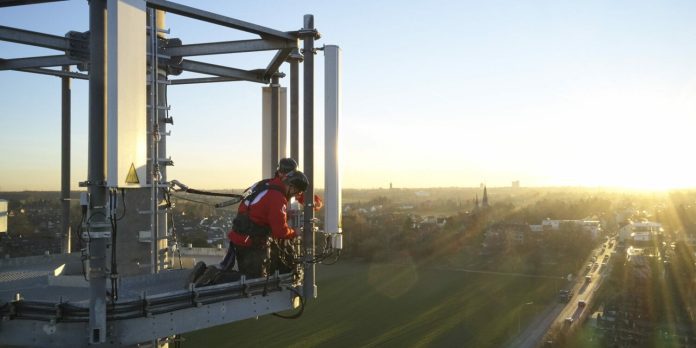Deutsche Telekom, Telefónica Deutschland and Vodafone each covered an area of between 59% and 77% with 5G
5G networks covered 90% of Germany’s territory as of October, up from 5G coverage of 79% in October 2023, according to data from the country’s Federal Network Agency (Bundesnetzagentur).
Local carriers Deutsche Telekom, Telefónica Deutschland and Vodafone each covered an area of between 59% and 77% with 5G.
“The 5G expansion in Germany has so far taken place gradually. At the beginning, the existing 4G infrastructure was primarily used to expand 5G Dynamic Spectrum Sharing (5G DSS). In later phases, the expansion will increasingly focus on 5G Standalone (5G SA). For the 5G Standalone version, only 5G infrastructure is used, both in the radio access network and in the core network. Consumers therefore benefit from better network coverage and a generally higher data rate,” Bundesnetzagentur said.
Deutsche Telekom says that its 5G network currently covers 96% of the German population (as opposed to geography). Deutsche Telekom’s 5G network has 80,000 5G antennas, including over 10,000 antennas transmitting on the 3.6 GHz band in more than 800 cities and municipalities across the country.
Deutsche Telekom’s 5G technology is currently offering download speeds of up to 1 Gbps. The telco expects to reach 99% of the population in Germany with 5G by 2025.
In August, Deutsche Telekom said it has already connected 83% of all 5G mobile communications locations nationwide with fiber optics.
The telco also said that more than 10,000 5G mobile sites now have fiber optic connections with a speed of 10 Gbits, accounting for around 40% of all 5G mobile radio systems. By 2026, Deutsche Telekom will equip more than 28,000 cell phone sites with high-speed connections at 10 Gbits.
Meanwhile, Vodafone Germany’s 5G network currently reaches 90% of the country’s population. The operator’s 5G Standalone network (SA) serves 45% of the German population, the carrier added. Vodafone previously said that 5G SA technology will reach nationwide coverage by 2025.
Vodafone currently operates more than 26,000 mobile radio stations in Germany, including almost 15,000 5G stations.
Vodafone Germany had launched its 5G Standalone network last year in partnership with Ericsson, Nokia, Qualcomm and Oppo. For the 5G expansion, Vodafone is currently relying on frequencies in the 3.6 GHz, 1.8 GHz and 700 MHz bands in large urban areas, residential areas and suburbs and rural areas across Germany.
Vodafone initially launched its 5G network in Germany in 2019, using 3.5 GHz frequencies that it acquired from Telefónica in 2018.
In October, Telefonica Deutschland announced the launch of its 5G Standalone network in the country under the 5G Plus brand.
The carrier’s 5G Plus uses frequencies in the 700 MHz, 1.8 GHz and 3.6 GHz bands.
Telefonica activated nearly 1,000 new 5G sites nationwide during the first quarter of the year. The operator said it has been focusing on 5G network densification in both urban and rural areas of Germany.

